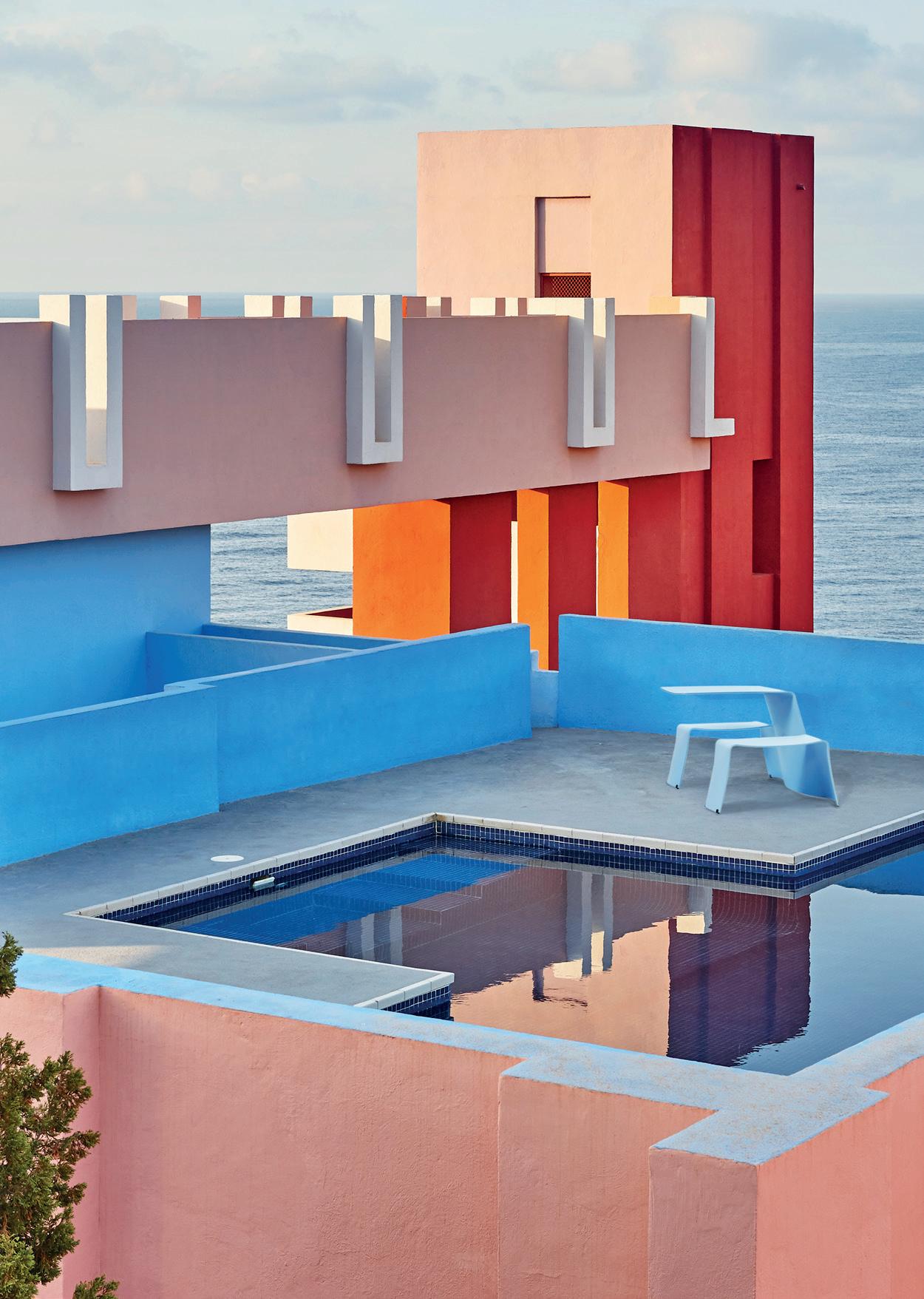
2 minute read
Living large in small spaces
What will the future look like? According to the UN, +70% of the world population will live in urban areas by 2050. In this near future, what will make a city a desirable place to live in? Private spaces will continue to become smaller, therefore the creation of more shared public spaces will be necessary as an offset.

The 'Muralla Roja' complex in Calpe, Spain
By Ricardo Bofill, 1968
Back in 1968 Ricardo Bofill designed the ‘Muralla Roja’ Spanish for ‘The Red Wall’ project in Calpe, Spain. The layout of this apartment building challenged the increasing division between public and private space. That’s why Extremis brings its creations designed for the future in a setting inspired by this pastel-colored complex.

Extremis Bistroo
Two seats and a table to sit side by side, designed with small balconies in mind.
The building is inspired by the Mediterranean tradition of the kasbah (which typically refers to a citadel or several buildings behind a defensive wall). The silhouette of Muralla Roja follows the contour lines of the rocky cliff it sits on and creates an ensemble of interconnected patios and stairs that provide access to multiple apartments. The eye-catching colors that cover the facades either contrast with nature or complement its purity.
Designing for density

Space is priceless. Every square centimetre counts, especially in a world where people are living in more densely populated places. With greater proximity, however, comes more intense interaction. This fact forms both the start and endpoint for Extremis designs, whose very raisons d’être are defined by concrete needs.

Extremis Virus collection
Compact and playful picnic table for 3/4/5 people
Remember when we used to envy those friends or acquaintances who had the biggest house, the most expansive lawn, or the bathroom you could get lost in? Today, our self-worth no longer depends on the amount of space we take up. Instead, we long to live more ecologically, closer to our place of work, and more ‘in touch’ with the world around us.

Rooftop swimming pool at Muralla Roja with Extremis Picnik
Of course, economic and demographic factors play important roles as well: housing prices are skyrocketing, many people remain single or postpone marriage, and we all live longer overall. This is why the whole ‘less is more’ adage isn’t just another fad, but a philosophy deeply embedded in the fabric of modern times.

Extremis Picnik
A design classic, thanks to its iconic shape.

